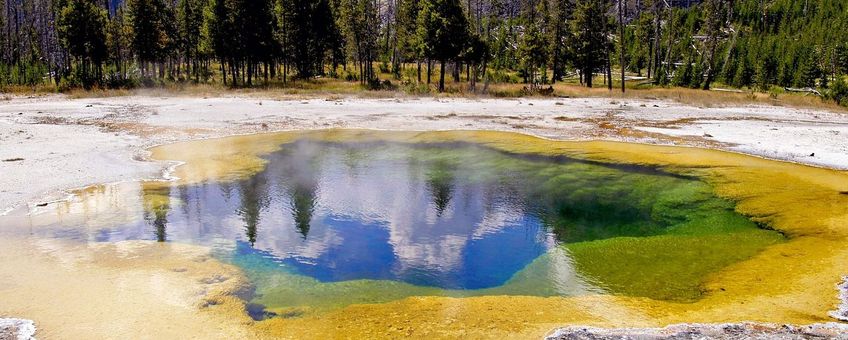
Microorganisms essential to achieve global sustainability goals
Institute for Biodiversity and Ecosystem Dynamics (IBED)UN goals for a safe and healthy planet
In 2015, all United Nations member states accepted seventeen Sustainable Development Goals (SDGs) for the year 2030: a ‘shared blueprint for peace and prosperity for people and the planet, now and in the future’. UN member states are committed to trying to achieve these broad goals to ensure a safe and healthy planet. But the chances of succeeding seem slim for now.
Seven thematic research areas
Focusing on microorganisms offers opportunities to move for all UN goals faster and more cost-effective, says an international group of microbiologists. Microorganisms are ubiquitous and highly diverse, making up an estimated 99 percent of all biodiversity. Since their emergence more than three billion years ago, they have played a crucial role in life on earth: for instance by breaking down waste, recycling nutrients, and purifying water. The scientists advocate focusing global microbiological research on a total of seven overarching areas, such as health, food production and nutrition, synthesizing and recycling products, global biogeochemical cycles and climate change.

Professor of Aquatic Microbial Ecology and co-author of the publication Jef Huisman from the Institute for Biodiversity and Ecosystem Dynamics (IBED) at the University of Amsterdam: ‘Until now, the seventeen sustainable development goals have been addressed individually, through all kinds of different projects in lots of countries. By focusing on the development of microbial technology for a healthy planet, you can address several goals at once.’
Technological innovations aided by nature
Huisman has plenty of examples of the tremendous potential of microorganisms. ‘For a sustainable future, the world is looking for technological innovations aided by nature. Take for example bacteria. They can be used in breaking down plastic and other environmental contaminants, filtering out greenhouse gasses such as methane from the air, and making biofuel from waste. To combat the nitrogen crisis in agriculture, bacteria could be used to convert nitrate and ammonium into harmless nitrogen gas.’
But all this does not happen by itself. Huisman: ‘We need to find the right types of microorganisms and their enzymes with which they convert substances. That research goes beyond microbiology. It also requires computer science, artificial intelligence and chemical technology for instance.’
Major role of marine microorganisms
Huisman himself is an expert on algae and phytoplankton. He outlines the potential of marine algae to combat climate change. ‘In the surface layer of the oceans, single-celled cyanobacteria and algae such as diatoms capture huge amounts of carbon dioxide from the air every day using photosynthesis. Can we boost that further? The challenge is to allow the captured carbon dioxide to sink into the deep ocean. Diatom cells can be sticky and form larger aggregates, but it depends on the species composition how fast such an aggregate sinks down.’
The scientists' concrete advice to governments and scientists is to develop education and invest in the seven overarching areas. Huisman: ‘The necessary technologies could be developed under the umbrella of the UN, in order to fully exploit the potential of microorganisms.’
More information
- The review article Scientists’ Call to Action: Microbes, Planetary Health, and the Sustainable Development Goals has been published in the scientific journal Cell and was written on the basis of 214 scientific publications. In a review article, scientists analyze the new insights obtained from previously published articles. This enables them to summarize the current state of understanding in a research field.
Text: Institute for Biodiversity and Ecosystem Dynamics (IBED)
Images: Pixabay (lead: extremophile bacteria in Yellowstone National Park); ETH Zürich/Crowther Lab
